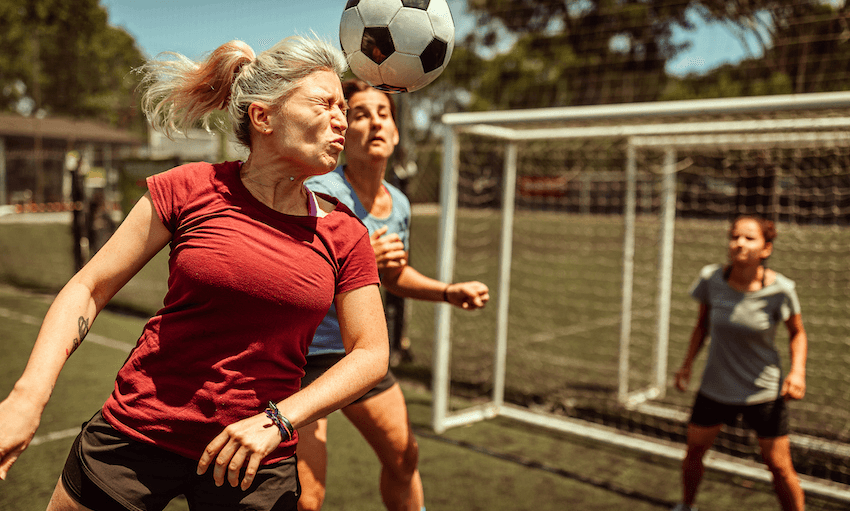There’s a growing body of overseas evidence that repeated small blows to the head – like those experienced in many contact sports – can lead to chronic traumatic encephalopathy, or CTE. Now a brain scientist and athlete is embarking on research to shed light on the situation in New Zealand.
Helen Murray has seen too many of her friends’ lives changed by head injuries from her sport. The captain of the New Zealand ice hockey team and neuroscientist says that people affected by head injuries can be more sensitive to sound and light, get headaches, find it hard to concentrate and feel like their personality has changed. In the worst cases, repetitive knocks lead to early dementia.
As well as being one of our top sportspeople, Murray is a neuroscientist at the University of Auckland. She’s now embarking on research that, she hopes, will illuminate how repetitive head injuries lead to dementia and find early signs that it’s happening so that these devastating effects can be prevented. She just received nearly $250,000 in funding from the Health Research Council to do so.
She’s studying chronic traumatic encephalopathy, or CTE (the condition that’s key to the plot of the 2015 Will Smith film Concussion). It’s a disorder with a lot of question marks around it.
Neuroscientists know CTE happens with repeated, usually small, blows to the head from playing sports like American football, rugby, ice hockey or boxing. But which sports it’s linked to, and whether the disease differs depending on the sport, isn’t yet clear. Even making the link between sport and CTE is a relatively recent thing.
“The symptoms don’t develop until 10, 15, 20 years after your playing career. So it’s not always obvious that what you’re experiencing is happening because of what happened in your sport,” Murray says. “People might just think ‘oh I’m getting older’ or ‘oh the job I did predisposed me to this’.”
People with CTE can be affected in a wide range of ways. They may get headaches, feel depressed or even suicidal, lose their memory, have poor impulse control or act aggressively.
And what’s actually going on inside the brain is also a bit of a mystery. “We really don’t know much about what’s happening at the microscopic level of the brain,” says Murray. Clumps or tangled messes of proteins can build up, brain cells might show signs of being stressed or people may start losing brain cells altogether.
It’s a similar picture to what’s happening in Alzheimer’s patients, and sometimes people can have both, and other, disorders at the same time. And CTE can only be diagnosed definitively after death by looking at the brain tissue under a microscope.
What scientists do know about CTE comes mostly from studies of American football players. Murray wants to build a picture of what’s going on in Aotearoa.
She’s starting her research using brain samples from Australian rugby and football players. She later hopes to look at brains of former New Zealand contact sports players.
As part of her Health Research Council funded project, Murray will screen these brains for anything out of the ordinary – blood vessel damage, the connections (or lack of) between brain cells or buildup of toxic proteins. Once she’s found some interesting targets or things that are common for CTE sufferers, she and her team will zoom in and analyse those further.
The ultimate goal is to be able to identify signs of CTE that show up in the bloodstream or spinal fluid. That would allow doctors to non-invasively detect, diagnose, treat and hopefully prevent damage. But that’s a long way off she says: “This [project] is really just the start.”
Murray says her sport, ice hockey, is what motivated her to do this research.
“Too many of my teammates have been affected [by head injuries] to the point that it’s affected their daily lives and it’s taken them a really long time to recover. In some cases I’ve had a few teammates who had to stop playing from the danger of getting another [head] impact and what that would mean for their lives.”
She’s keen to hear from people who play contact sports and think it’s affected their brains.
Murray is one of nine recipients of the 2021 Emerging Researcher First Grants provided by the Health Research Council. This year the council awarded more than $2.1 million to projects ranging from finding markers of ADHD to using psychedelic drugs as a late-stage cancer treatment.

